Sad State of Maitai Bay
We went for a camping family trip to the Far North, to Karikari Peninsula. There is that very popular holiday spot there in Maitai Bay with DOC campground. Local tribes announced a ban on fishing and collecting seafood in the bay recently due to the degradation of the environment. As far as I know they cannot enforce it legally, but hopefully people would understand and join their effort.
We did not do much diving, but enough to be able to compare the bay with another spot in Rangiputa at the harbour mouth. As it is visible from the pictures, Rangiputa seems to have a healthy growth of kelp and other seaweeds with brightly colored sponges on clean sandy bottom covered with boulders. It is a great place for macro subjects, but also to see kingfish, or even a sea turtle (we met the guys, but not the turtle).
On the other hand Maitai Bay was murky, “dusty” should I say, with short algae cover and very rare kelp specimens. We saw some young snapper which is a good sign … but also too many sea urchins (kina) that eat all the kelp. “Kina barrens” (bare rocks covered with the urchins) are the result … at least that’s what scientists say.
Slovak
Vybrali sme sa kempovať na ďaleký sever, na poloostrov Karikari. Na jeho konci je veľmi populárny kemping v zátoke Maitai, ktorý spravuje čosi ako ministerstvo pre životné prostredie. Miestne kmene nedávno vyhlásili v zátoke zákaz lovu rýb a zberu morských plodov kvôli stupňujúcej sa degradácii podmorského života. Pokiaľ viem, tak ten zákaz nemôžu vynútiť právnou cestou, ale snáď to ľudia pochopia a pridajú sa.
Nepotápali sme sa veľa, ale dosť na to, aby sme mohli porovnať podmienky v zátoke s iným miestom v dedinke Rangiputa. Ako je vidieť z fotografií, Rangiputa má zdravý porast chalúh a farebných hubiek na čistom pieskovom dne, z ktorého vytŕčajú balvany. Je to pekné miesto pre makrofotografiu, ale dajú sa tam vidieť veľké kingfish a dokonca aj morské korytnačky (stretli sme ľudí, čo videli).
V kontraste zátoka Maitai bola špinavá, akoby “zaprášená”, len s malými riasami a veľmi zriedkavými chaluhami. Videli sme tam mladých snapprov, čo je dobré znamenie … ale aj príliš veľa ježoviek, ktoré žerú chaluhy. Výsledkom sú “ježovkové pustatiny” (holé skaly pokryté ježovkami), resp. aspoň tak hovoria vedci.
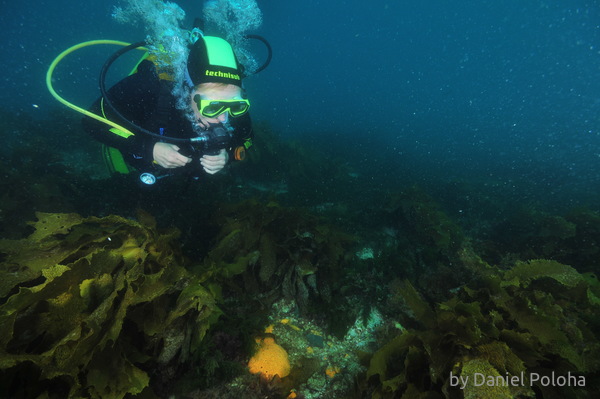
Ivana watching yellow sponge among kelp. The kelp is quite dense, fronds are bent because of strong tidal flow. (Rangiputa)
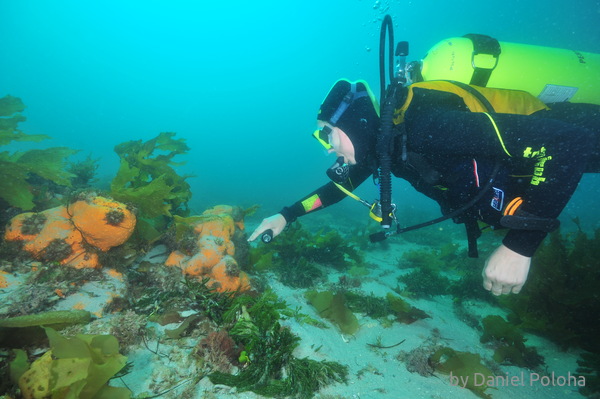
Ivana at yellow boring sponge growing on rock protruding from the sandy bottom. The sponges and the vegetation are clean, the sand is coarse, there is no fine sediment on them. The visibility is not ideal due to plankton bloom and strong tidal current which disturbs sand. (Rangiputa)
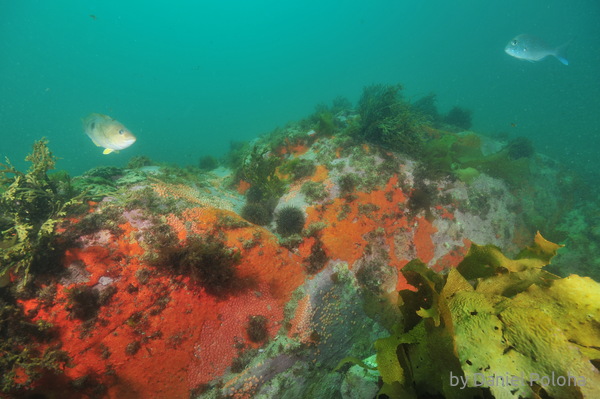
Rock covered with colorful encrusting sponges. Sea urchins crawl openly on the rock not fearing predators, vegetation is scarce and in a sad state. Note the young snapper in the right top corner. (Maitai Bay)
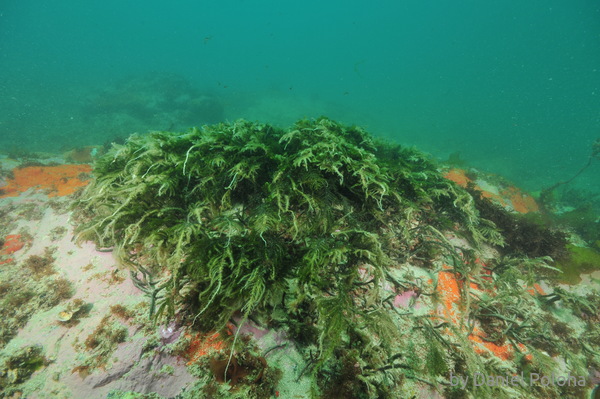
Green algae on flat rock. Water is murky, there is a lot of fine sediment on the bottom, easily disturbed by water movement. (Maitai Bay)
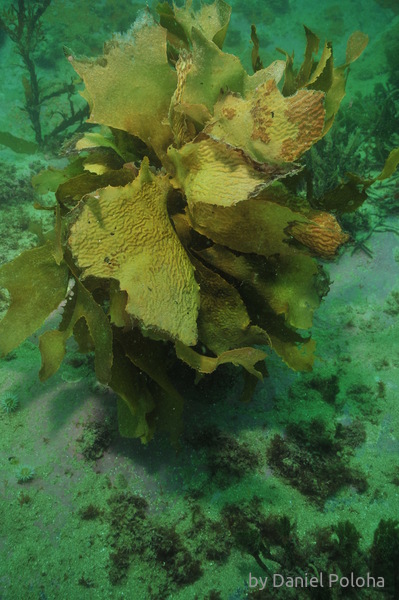
A rare view in Maitai Bay … a single specimen of brown stalked kelp Ecklonia radiata. Even this one has been eaten up to much extend. (Maitai Bay)
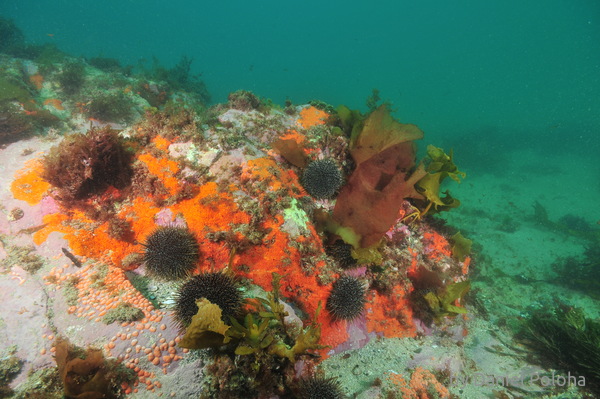
Another rock with colorful layer of encrusting sponges and compound tunicates, but almost completely missing seaweeds. We are not on a deep reef, this rock is on the bottom in about 7m of water, there should be plenty of kelp here. (Maitai Bay)
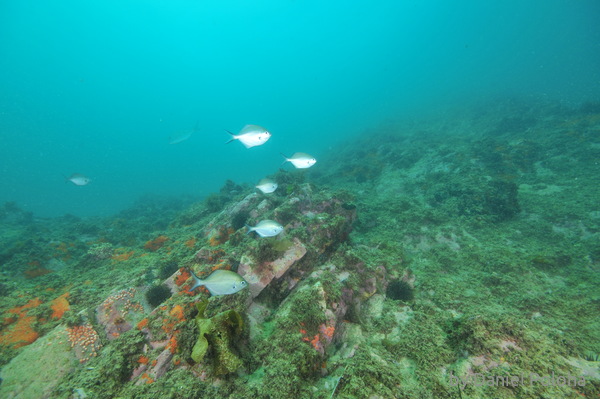
Small school of inquisitive sweeps swimming above a rocky slope covered with short algae and sediments. You can see patches of colorful encrusting sponges and tunicates among them, but the view as a whole is quite unappealing. (Maitai Bay)